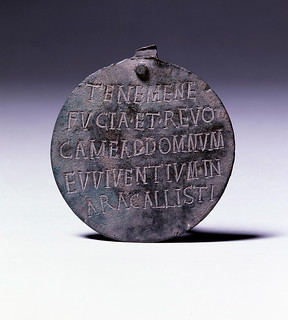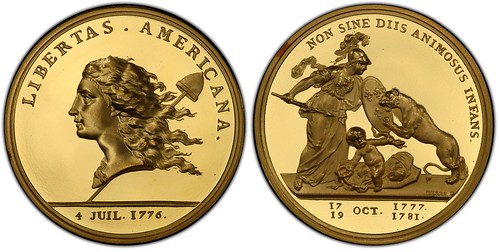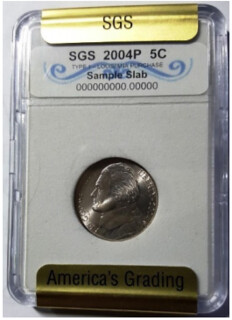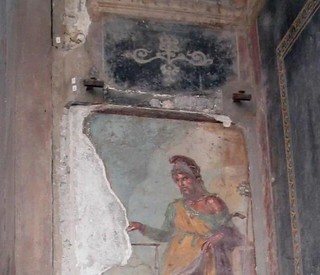
PREV ARTICLE
NEXT ARTICLE
FULL ISSUE
PREV FULL ISSUE
NOTES FROM E-SYLUM READERS: JULY 9, 2023
1976 Gold Libertas Americana Restrikes "There were three gold of the FCI restrike, and I owned one of them back in the late 70's or early 80's. I sold it to Gil Steinberg, a Manhattan businessman and serious collector, but I have never seen it offered again, as I do not remember it being sold in the auction of his collections." Interesting. Does anyone know the whereabouts of any of these gold versions today? I found one online listing for a different gold restrike, and I'm using it here as a stand-in illustration. -Editor
To read the complete item description, see:
To read the earlier E-Sylum article, see:
Beate Rauch "Another well-known woman in the hobby was Beate Rauch who lived in Los Angeles before moving to Las Vegas where she lived with her husband, Hans, and have since both passed away. Beate was a well-known dealer in foreign currency and traveled to many shows and was involved with many numismatic organizations including the International Bank Note Society, the Society for International Numismatics, the Convention of International Numismatics, and the Society for Ancient Numismatics." Thank you. -Editor
To read the earlier E-Sylum articles, see:
More on Curved Needles "Although I thought of it at the time I didn't deem it newsworthy to report. I used to sail competitively and knew a number of sailmakers who also use a curved needle. I am certain that they were also used in upholstery and leather work as well as the carpet business as was reported and many other businesses as well."
To read the earlier E-Sylum articles, see:
Mystery Photo Assistance Sought "NBS board member Shanna Schmidt reports this photo, randomly laid-in to an old issue of The Asylum. Can an E-Sylum reader identify the people or the building in the photograph?" Hmmm. Thoughts, anyone? -Editor
6th Annual Slab Collectors Meetup "Come to the 6th annual slab collector meetup at the ANA World's Fair of Money in Pittsburgh. Thursday, August 10, 6:00 pm, in the lobby of the Westin hotel by the convention center. An informal gathering to talk about our common interest and have some show and tell. Hosted by me and the Slab King, Isaiah Hageman."
Bag of Coins Discovered in Ruins of Pompeii "The word Nova is now in ordinary use in Spain. What I got a bang out of was Mitsubishi developed an SUV named the Pajero -- which means something like bush man. It sold well in the Americas. In Spain however they changed the name to Montero -- sort of Mountain man -- The reason: Pajero means masterbater in Spain. Paja is straw, you know stuff going on out in the barn....." To bring this tawdry thread back to numismatics (sort of), this week I came across a bizarre fresco uncovered in Pompeii: a "painting of the well-endowed Priapus weighing his member on a balance against a bag of coins." -Editor
To read the complete article, see:
The Priapus fresco adorns the entryway to the House of the Vetii, essentially the equivalent of our foyer, and a statue of Priapus lay just past it in the peristyle in front of the garden. Because of the subject matter, rumor has it that the Priapus fresco was covered over and its reproduction locked away until the end of the 20th century.
To read the complete article, see:
For most of the twentieth century the unique image of Priapus weighing his giant phallus against a plump money bag at the front entry to the House of the Vettii in Pompeii was considered so obscene that it was covered with a slatted box which was opened for the viewing pleasure of only a select few--mostly male--visitors. Although only the brackets of the box remain today, the image itself (though featured on many a postcard) remains decorously under-interpreted in scholarship.
To read the complete article, see:
La Casa dei Vettii was reopened to the public earlier this year. This article shows a full image. But scroll down for a wider view of the entryway wall where the painting is seen in (disappointingly smaller) proportions. -Editor
Visitors to Pompeii can finally see one of ancient Rome's most unsettling images — a fresco of the fertility god Priapus weighing his hefty penis on a scale balanced by a large bag of coins. After 20 years of nearly uninterrupted closure to the public, the Archaeological Park of Pompeii announced the reopening of La Casa dei Vettii on January 10. 
The first-referenced article from Aeon is a fascinating read. In another connection to numismatics, it illustrates an Roman slave tag, a forerunner of the well-known antebellum Charleston slave tags. -Editor Copper alloy tag that was attached to the collar of an enslaved person, inscribed with a demand to return the wearer to the slave master at his estate in Rome, 4th century CE. Courtesy the British Museum
To read the earlier E-Sylum article, see:
To read the earlier E-Sylum article, see:
Wayne Homren, Editor The Numismatic Bibliomania Society is a non-profit organization promoting numismatic literature. See our web site at coinbooks.org. To submit items for publication in The E-Sylum, write to the Editor at this address: whomren@gmail.com To subscribe go to: https://my.binhost.com/lists/listinfo/esylum All Rights Reserved. NBS Home Page Contact the NBS webmaster 
|




